Great Egyptian Museum
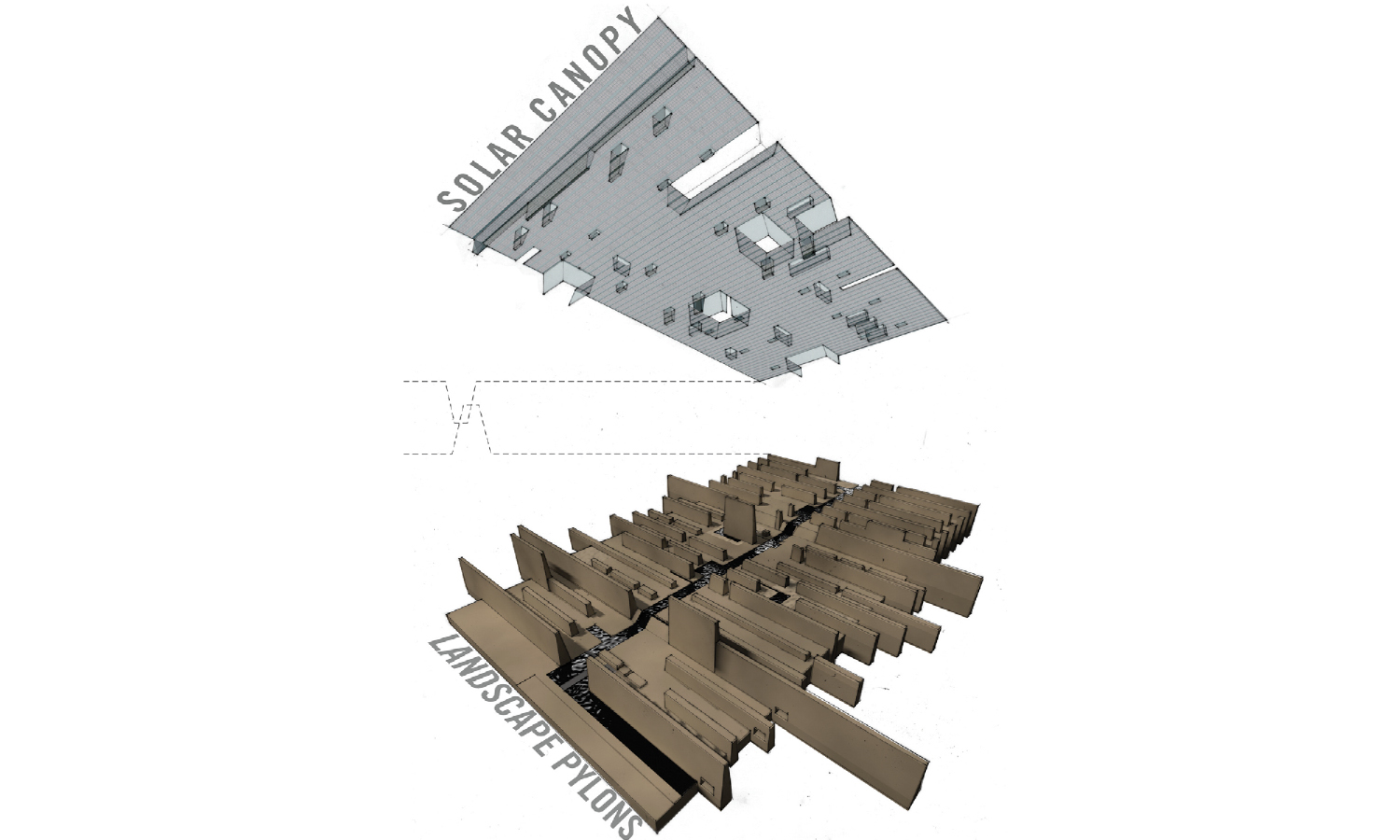
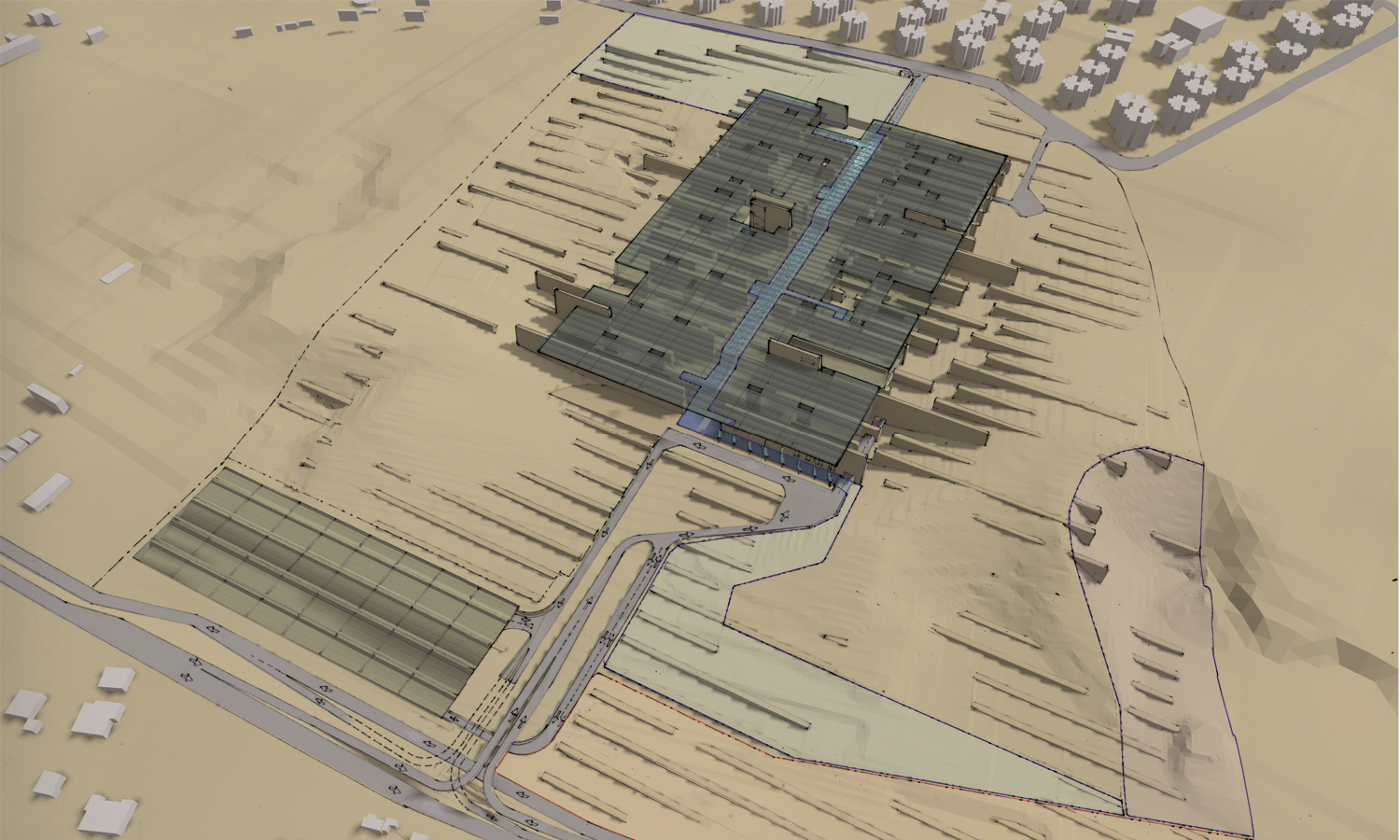
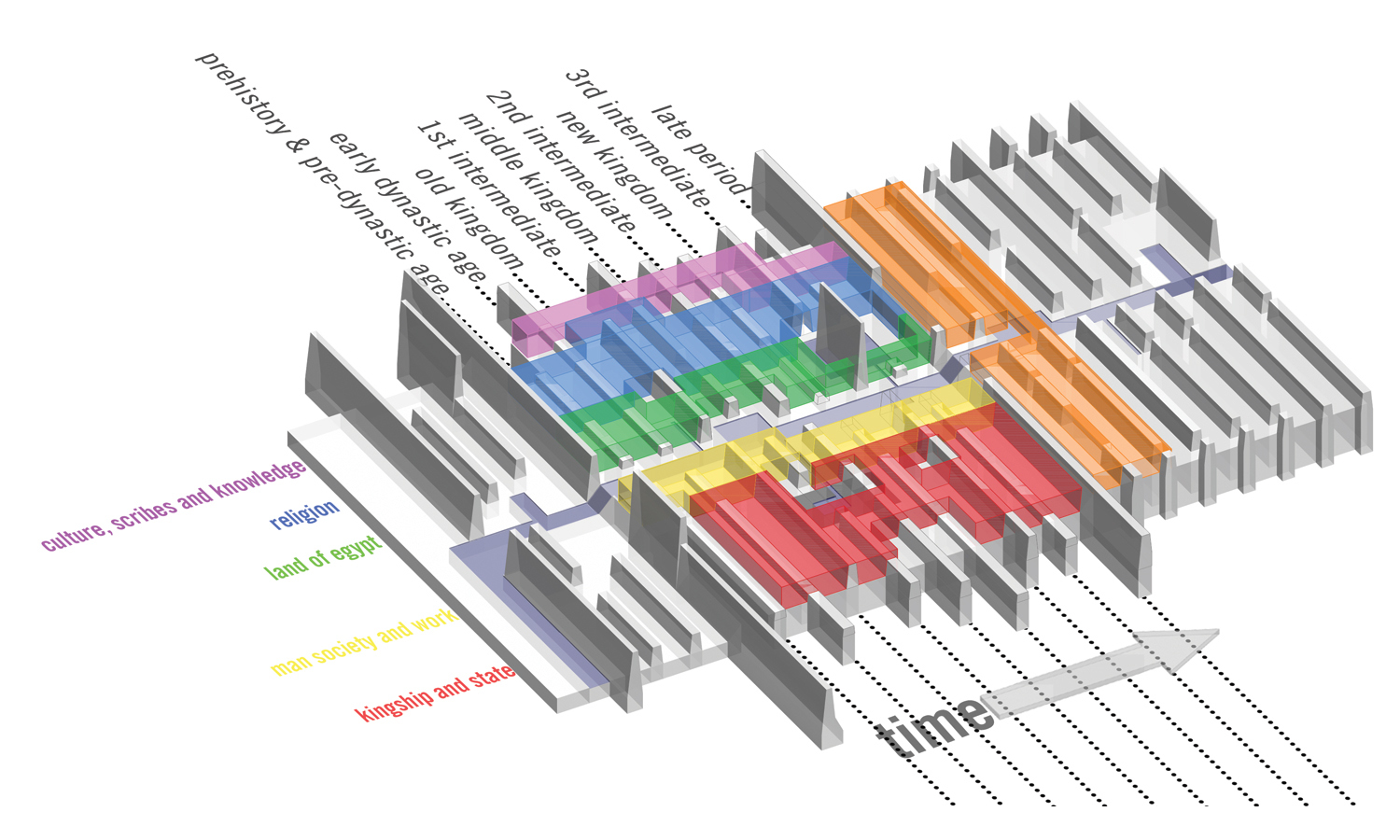
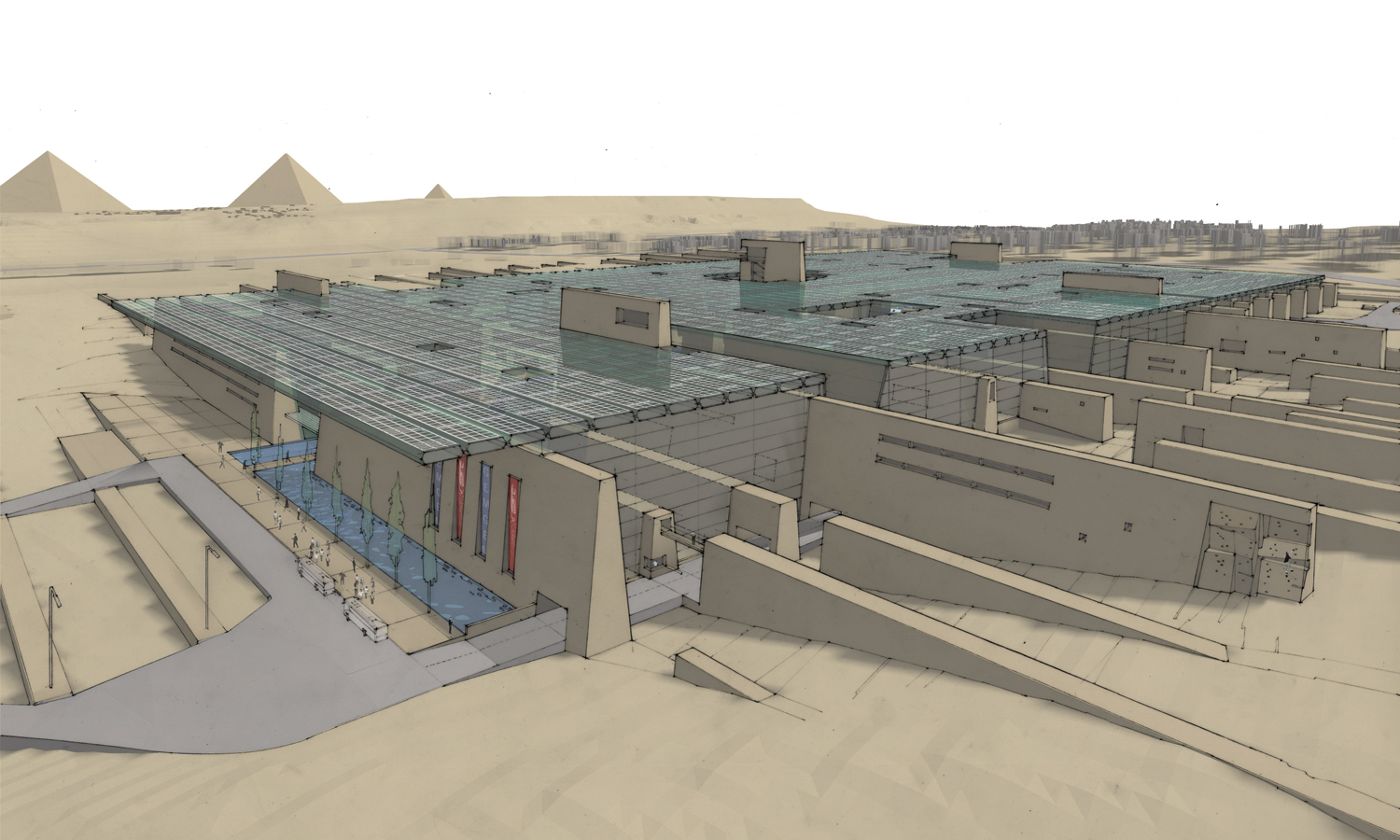
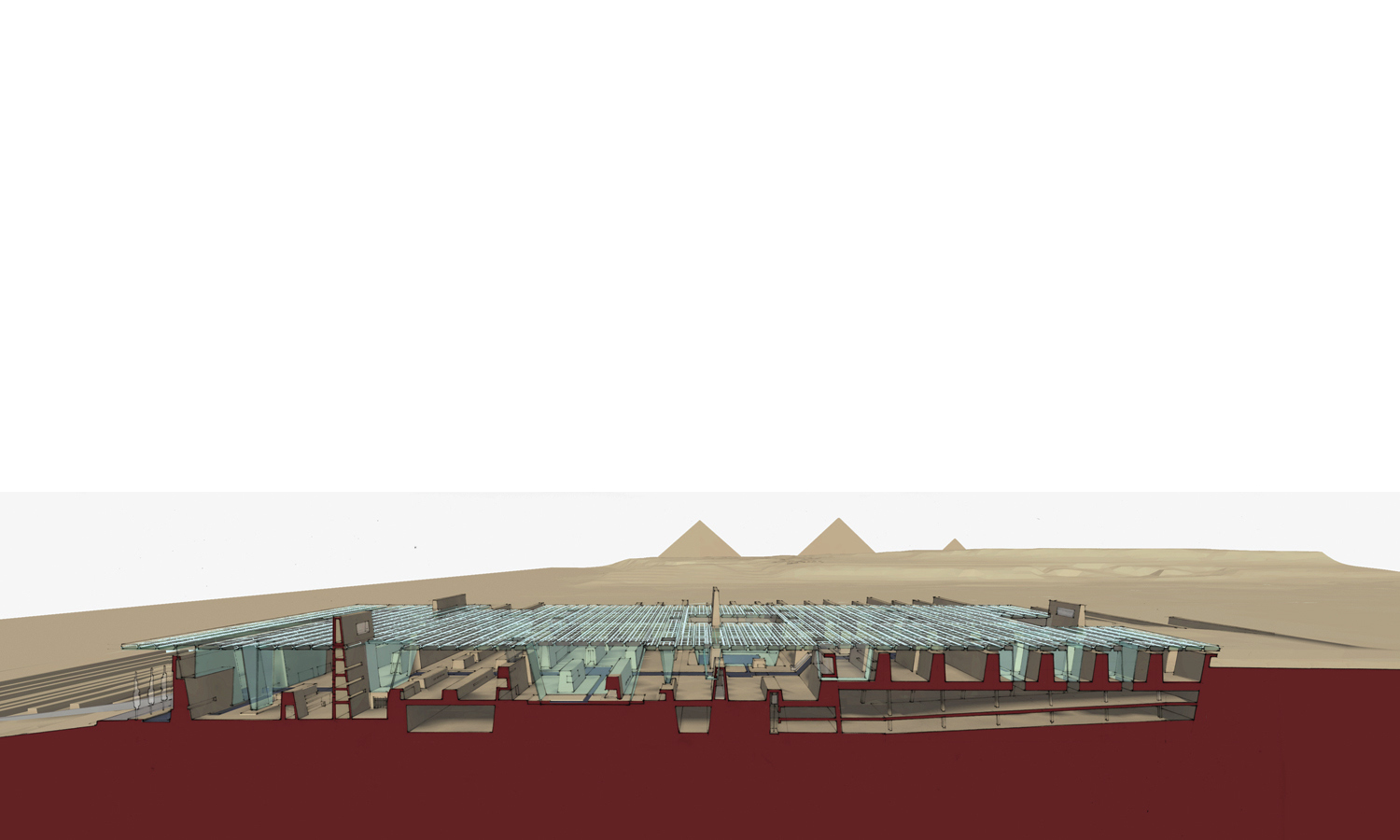




Great Egyptian Museum
Giza, Egypt
Design Competition 2002
925,000 sq.ft.
In 2003, 1,557 architecture firms from 83 countries entered this competition for a museum to house more than 120,000 Egyptian artifacts, including the treasures of King Tutankhamen, at a site adjacent to the Great Pyramids. LTL’s design for the museum is predicated on the spatial exchange between ground and sky. Both solid and hollow, occupiable pylons striate the site, while a canopy of solar glass collects and filters sunlight, and the dynamic interplay between these features creates a new museum landscape. The canopy of glass embedded with photovoltaics provides enclosure, filtered light, and a source of energy for this museum in the desert. A structural grid of inverted glass-clad wedges supports a space frame, creating an updated version of a hypostyle hall. Larger voids in the canopy bring exterior spaces to the interior of the museum, providing courtyards and moments of rest. Extended from stepped plateaus carved into the landscape, the stone-clad pylons link the landscape design with the museum proper. The pylons vary in height and width, creating a diverse set of spatial conditions appropriate for exhibition halls, archives, conference halls, and office areas.
Type
Credits
Competiton sponsor: The Arab Republic of Egypt, Ministry of Culture, Supreme Council of Antiquities
Project team: Paul Lewis, Marc Tsurumaki, David J. Lewis; Roman Torres, Christian Munoz, Ebby Wisecarver, Hye-Young Chung
